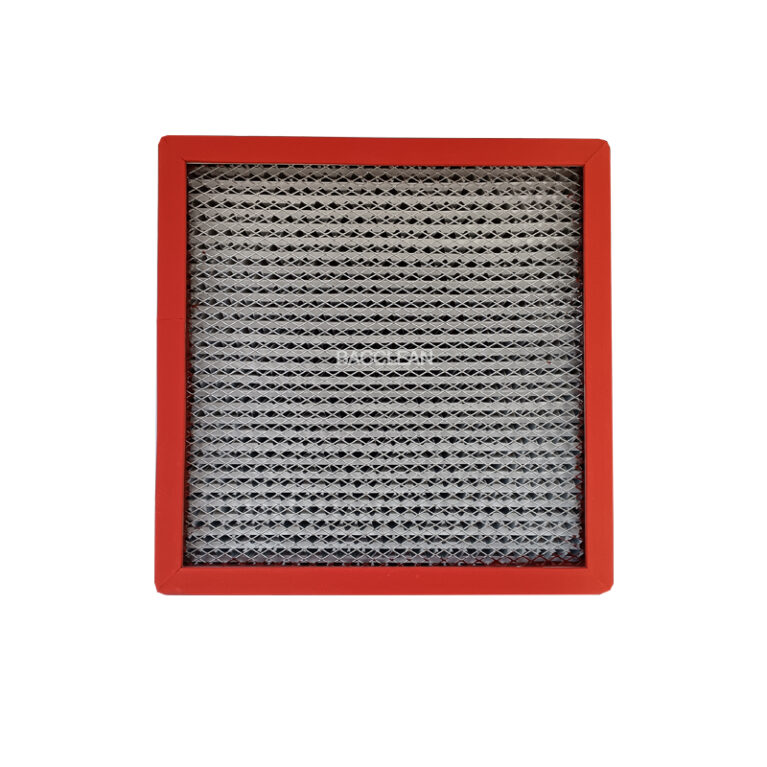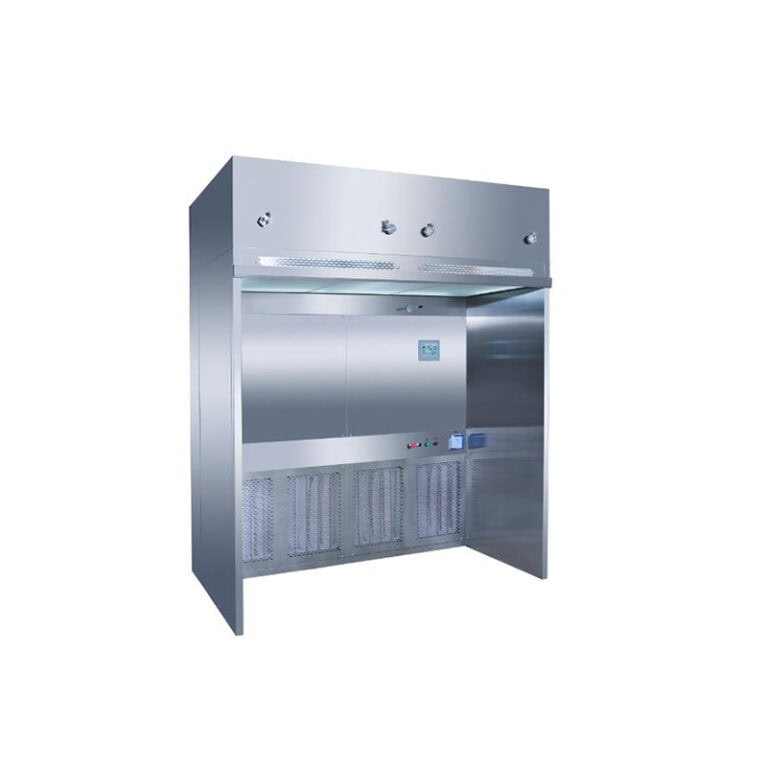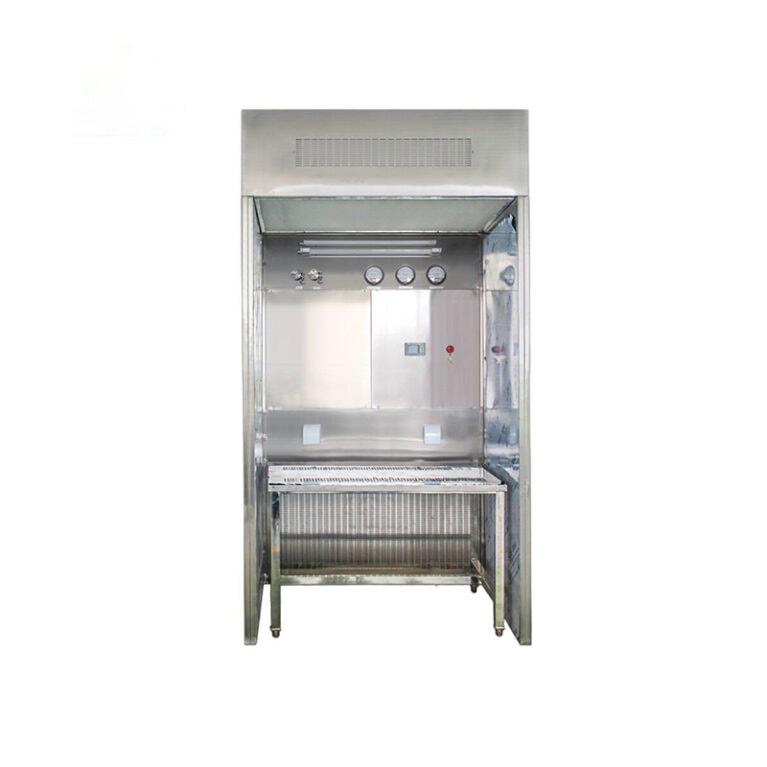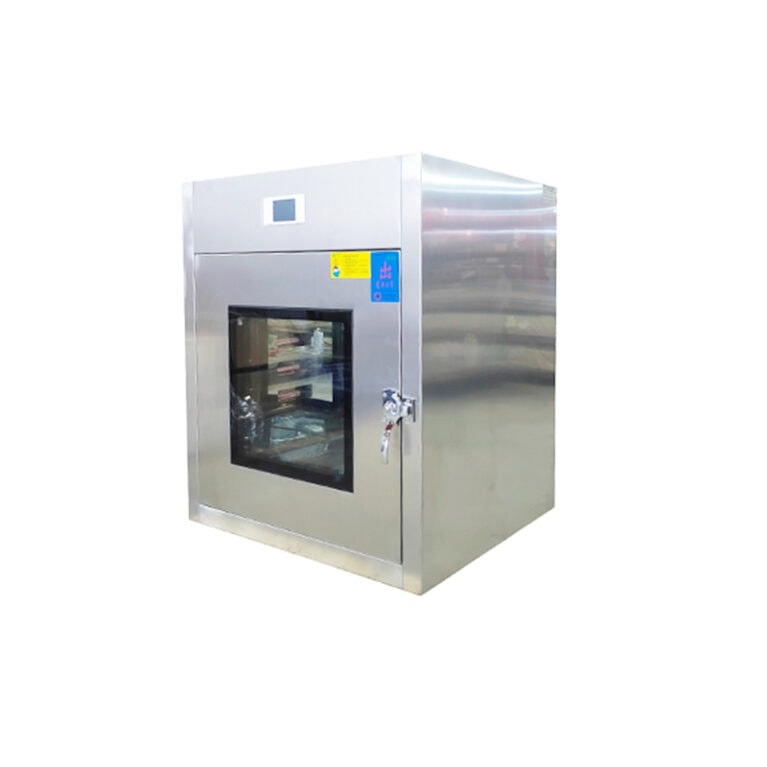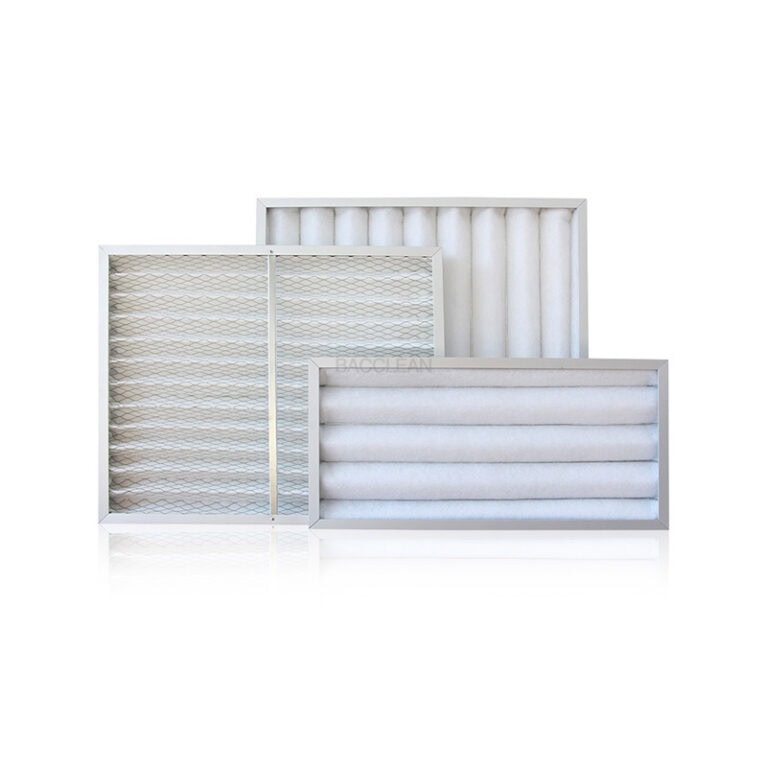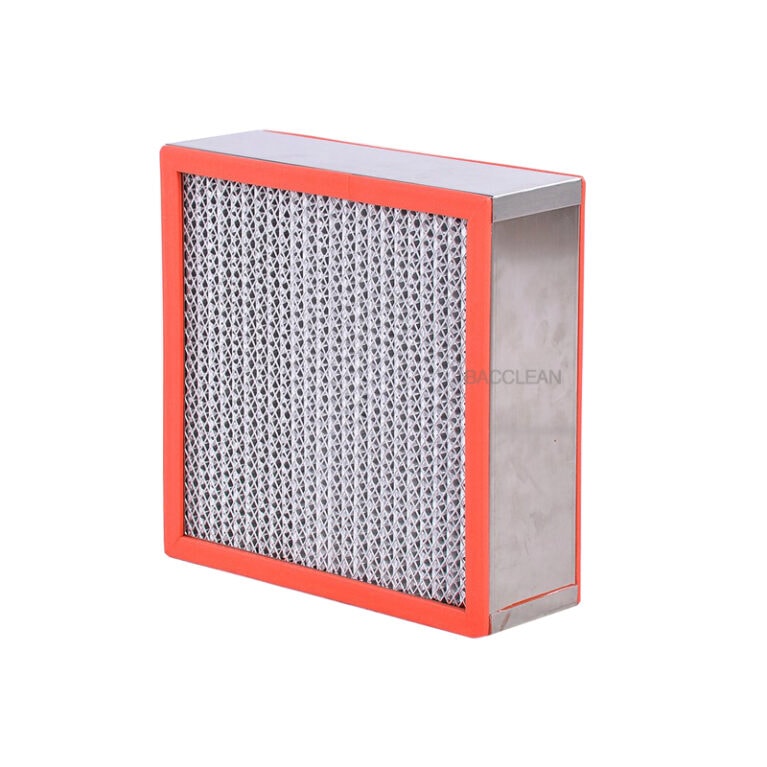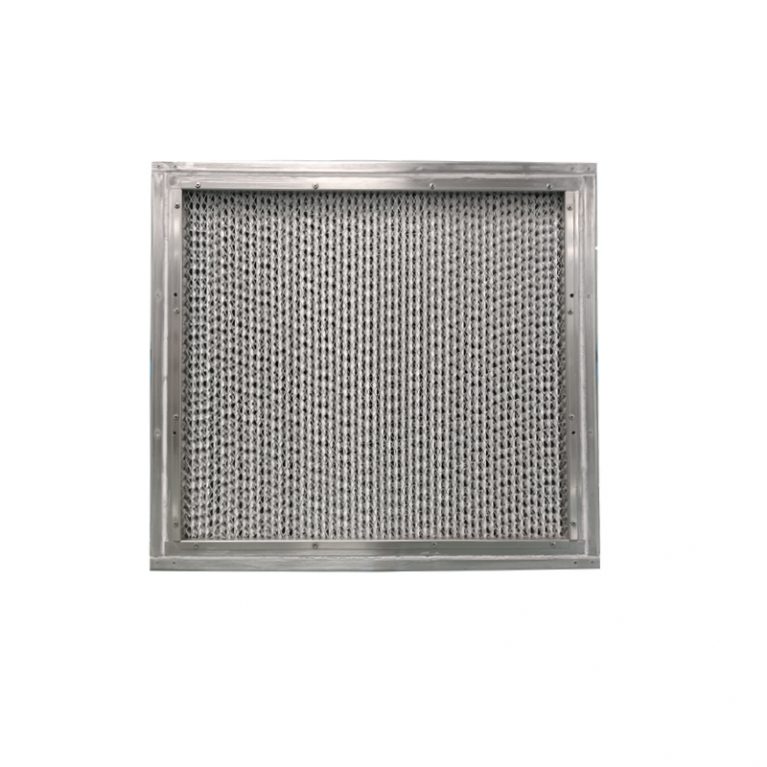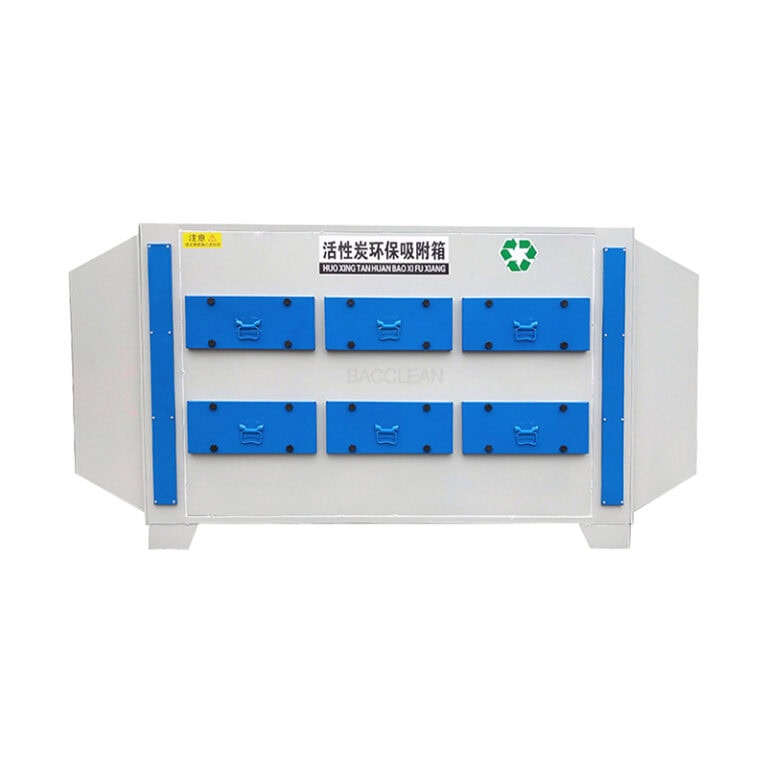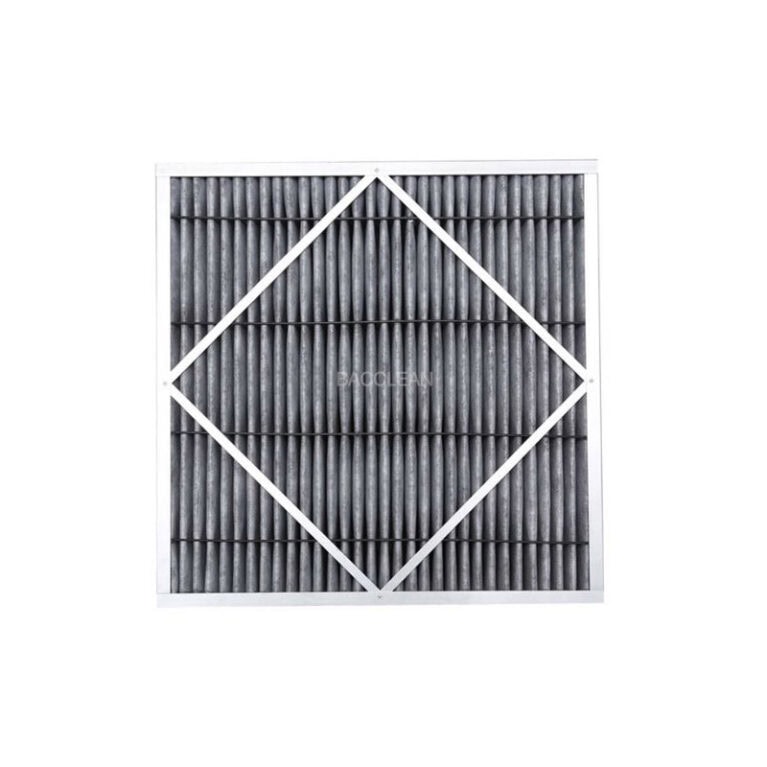تُستخدم فلاتر الهواء ذات الألواح المسطحة، بهيكلها البسيط وتكلفتها المنخفضة وقدرتها القوية على التكيف، على نطاق واسع في سيناريوهات "الترشيح المسبق" أو "الترشيح الأولي" لتنقية الهواء. يمكن أيضًا استخدام بعض النماذج متوسطة وعالية الكفاءة لتلبية احتياجات تنقية متوسطة المدى محددة. يمكن تصنيف مجالات التطبيق الأساسية إلى ثلاث فئات رئيسية: "المباني المدنية" و"الإنتاج الصناعي" و"السيناريوهات الخاصة"، على النحو التالي:
I. المباني المدنية والأماكن العامة: ضمان جودة الهواء الداخلي
يتمثل الطلب الأساسي لمثل هذه السيناريوهات في تصفية الجسيمات الكبيرة مثل الغبار العالق والشعر وحبوب اللقاح في الهواء، وحماية نظام التكييف والتهوية، وتحسين الراحة الداخلية في الوقت نفسه. تشمل سيناريوهات الاستخدام الشائعة ما يلي:
المساحات المكتبية والتجارية: أنظمة الهواء النقي لتكييف الهواء المركزي لمباني المكاتب والمباني التجارية ومراكز التسوق ومحلات السوبر ماركت وردهات الفنادق، إلخ. وباعتباره جهاز ترشيح مسبق، يمكنه اعتراض الغبار وقشور الحور وغيرها من المواد الموجودة في الهواء النقي الخارجي، ومنع تراكم الغبار وتكاثر البكتيريا داخل مكيف الهواء، وإطالة عمر خدمة المكونات الأساسية مثل المراوح ووحدات الملف.
المرافق الطبية والتعليمية: قاعات العيادات الخارجية بالمستشفيات، وممرات أقسام المرضى الداخليين، والفصول الدراسية بالمدارس، والمكتبات، إلخ. من الضروري تصفية الغبار وبقايا القطرات في الهواء (الاعتراض الأولي) لتقليل الحمل على الترشيح اللاحق متوسط وعالي الكفاءة (كما هو الحال في الأجنحة وغرف العمليات) وتقليل خطر انتقال العدوى.
مراكز النقل والأماكن العامة: أنظمة تهوية للمساحات الكبيرة مثل محطات المطارات وقاعات الانتظار في محطات السكك الحديدية ومنصات مترو الأنفاق والملاعب. في مثل هذه السيناريوهات، هناك تدفق كبير من الناس والكثير من الغبار الخارجي المتداخل. يمكن للمرشحات ذات الألواح المسطحة اعتراض الجسيمات الخشنة بكفاءة، والحفاظ على حجم تهوية ثابت، ومنع تعكر الهواء.
السكنية والشقق السكنية: وحدات التصفية الأولية لتكييف الهواء المركزي المنزلي وأنظمة الهواء النقي المنزلية، أو شاشات التصفية المسبقة لماكينات الهواء النقي المثبتة على الحائط. ويمكنها تصفية الجسيمات الخشنة (PM10) والرمل وجثث الحشرات وغيرها من المواد الموجودة في الضباب الخارجي، وحماية المراوح الداخلية وتقليل تراكم الغبار في الأماكن المغلقة.
طــاء مجال الإنتاج الصناعي: حماية المعدات وبيئة الإنتاج
تركز المتطلبات في السيناريوهات الصناعية بشكل أكبر على "حماية معدات الإنتاج" و"الحفاظ على النظافة الأساسية" لمنع الغبار من التأثير على جودة المنتج أو إتلاف الآلات الدقيقة. التطبيقات الرئيسية هي:
أنظمة تهوية مركزية للمنشآت الصناعية العامة: ورش المعالجة الميكانيكية، وورش تجميع المكونات الإلكترونية، وورش الطباعة، وورش صب البلاستيك، إلخ. ويمكنها تصفية نشارة المعادن والغبار البلاستيكي وجزيئات الحبر وما إلى ذلك في الورشة، ومنع الغبار من الالتصاق بسطح المنتجات (مثل الدوائر القصيرة للمكونات الإلكترونية، والعيوب في المواد المطبوعة)، وفي الوقت نفسه تقليل تآكل المعدات (مثل أدوات الماكينات والمطابع).
صناعة الأغذية والأدوية (الترشيح المسبق): مصانع معالجة الأغذية (مثل إنتاج البسكويت والحليب المجفف)، ومستودعات المواد الخام في مصانع الأدوية، وأنظمة التهوية في ورش التعبئة والتغليف الخارجية. كمرشح مسبق للمرشحات متوسطة وعالية الكفاءة (مثل H10 وما فوق)، فإنه يعترض الدقيق وجزيئات المسحوق الطبي والشعر وما إلى ذلك في الورشة لمنع تلوث المواد الخام أو التعبئة والتغليف، مما يلبي متطلبات النظافة الأساسية لممارسات التصنيع الجيدة (GMP) للأغذية والأدوية.
صناعة الكيماويات والطلاء: "المعالجة المسبقة لهواء العادم" أو "الترشيح المسبق للهواء النقي" في ورش إنتاج الطلاء وأكشاك رش الأثاث. ويمكنه تصفية الشوائب الجسيمية في غبار الطلاء والمذيبات المتطايرة، ومنع انسداد مجرى العادم، أو تجنب اختلاط الغبار الخارجي بالطلاء والتأثير على تأثير الطلاء (مثل جزيئات سطح الطلاء).
صناعة الطاقة والطاقة: المولدات، والمحولات، وأنظمة التبريد والتهوية للألواح الكهروضوئية في محطات الطاقة الحرارية ومحطات الطاقة الكهروضوئية. اعتراض غبار الفحم، وغبار الرمال، وغبار الصفصاف وغيرها من المواد الموجودة في الهواء لمنع التصاق الغبار بالمشتتات الحرارية للمعدات، مما قد يتسبب في ضعف تبديد الحرارة وتجنب التحميل الزائد على المعدات أو تقصير عمر الخدمة.
ثالثاً. سيناريوهات خاصة: تتكيف مع متطلبات تصفية محددة
بالإضافة إلى السيناريوهات العامة، يمكن أيضًا تكييف المرشحات ذات الألواح المسطحة مع بعض سيناريوهات الطلب الخاصة بناءً على درجة مادة المرشح (مثل الكفاءة المتوسطة والعالية) أو التصميم الهيكلي
غرف التنظيف والمختبرات (الترشيح المسبق) : الواجهات الأمامية لأنظمة التهوية لغرف تعقيم أشباه الموصلات ومختبرات السلامة البيولوجية وغرف الاستنبات الميكروبيولوجي. كمرشح مسبق لمرشحات الهواء عالية الكفاءة (HEPA) أو مرشحات الهواء فائقة الكفاءة (ULPA)، فإنه يعترض أكثر من 901 تيرابايت 3 تيرابايت من الجسيمات الخشنة (مثل درجة G4)، مما يقلل بشكل كبير من الحمل على HEPA ويطيل دورة استبداله (HEPA مكلف نسبيًا).
تصنيع وصيانة السيارات: المعالجة المسبقة لأبخرة اللحام في ورشة التجميع النهائي للسيارات، وترشيح الهواء النقي في كشك الرش في ورش صيانة مخازن 4S. ويمكنه تصفية الدخان المعدني وجزيئات الغبار الناتجة أثناء اللحام وجزيئات رذاذ الطلاء الخشنة أثناء الطلاء، مما يحمي صحة المشغلين ويمنع الدخان والغبار من تلويث جسم السيارة (مثل الشوائب في نقاط اللحام وعيوب سطح الطلاء).
الزراعة وتربية الحيوانات: أنظمة التهوية للبيوت الزجاجية الكبيرة وتنقية الهواء النقي لمزارع الماشية والدواجن (مثل مزارع الدجاج ومزارع الخنازير). ويمكنه تصفية حبوب اللقاح الخارجية وبذور الأعشاب والحشرات (مثل حشرات المن)، ومنع حساسية حبوب لقاح المحاصيل أو إصابة الماشية والدواجن بالآفات والأمراض، وفي الوقت نفسه تقليل دوران وانتشار السماد والغبار في الأماكن المغلقة.
مراكز البيانات وغرف الكمبيوتر: أنظمة تكييف الهواء والتهوية لغرف الخوادم ومراكز البيانات. تعترض الغبار والألياف في الهواء لمنع الغبار من الالتصاق بالمكونات الدقيقة مثل اللوحات الأم للخوادم والأقراص الصلبة، وتجنب حدوث قصور في الدوائر الكهربائية أو أعطال في تبديد الحرارة، وضمان التشغيل المستقر لمعدات البيانات.
ملخص: منطق التطبيق الأساسي
إن جوهر تطبيق مرشحات الألواح المسطحة هو "خط الدفاع الأول للترشيح المرحلي" - سواء في السيناريوهات المدنية أو الصناعية، وتكمن قيمته الأساسية في
اعتراض شوائب الجسيمات الخشنة، وتقليل العبء على المرشحات النهائية المتوسطة وعالية الكفاءة، وخفض تكلفة تشغيل نظام الترشيح الكلي;
قم بحماية معدات التهوية (مثل المراوح ووحدات اللفائف والأدوات الدقيقة) من تآكل الغبار أو انسدادها;
الحفاظ على نظافة الهواء الأساسية وتلبية الحد الأدنى من متطلبات التحكم في الغبار في سيناريوهات مختلفة (مثل الراحة المدنية والجودة الأساسية للمنتجات الصناعية).
عند القيام بالاختيار، من الضروري مطابقة المادة المقابلة (مثل ألياف البوليستر والألياف الزجاجية) ومواصفات المرشح المسطح بناءً على تركيز الغبار في المشهد، ومتطلبات دقة الترشيح (مثل درجات G4 وF6 وH10) ومساحة التركيب (مثل حجم وحدة تكييف الهواء، وقطر مجرى الهواء النقي).
I. المباني المدنية والأماكن العامة: ضمان جودة الهواء الداخلي
يتمثل الطلب الأساسي لمثل هذه السيناريوهات في تصفية الجسيمات الكبيرة مثل الغبار العالق والشعر وحبوب اللقاح في الهواء، وحماية نظام التكييف والتهوية، وتحسين الراحة الداخلية في الوقت نفسه. تشمل سيناريوهات الاستخدام الشائعة ما يلي:
المساحات المكتبية والتجارية: أنظمة الهواء النقي لتكييف الهواء المركزي لمباني المكاتب والمباني التجارية ومراكز التسوق ومحلات السوبر ماركت وردهات الفنادق، إلخ. وباعتباره جهاز ترشيح مسبق، يمكنه اعتراض الغبار وقشور الحور وغيرها من المواد الموجودة في الهواء النقي الخارجي، ومنع تراكم الغبار وتكاثر البكتيريا داخل مكيف الهواء، وإطالة عمر خدمة المكونات الأساسية مثل المراوح ووحدات الملف.
المرافق الطبية والتعليمية: قاعات العيادات الخارجية بالمستشفيات، وممرات أقسام المرضى الداخليين، والفصول الدراسية بالمدارس، والمكتبات، إلخ. من الضروري تصفية الغبار وبقايا القطرات في الهواء (الاعتراض الأولي) لتقليل الحمل على الترشيح اللاحق متوسط وعالي الكفاءة (كما هو الحال في الأجنحة وغرف العمليات) وتقليل خطر انتقال العدوى.
مراكز النقل والأماكن العامة: أنظمة تهوية للمساحات الكبيرة مثل محطات المطارات وقاعات الانتظار في محطات السكك الحديدية ومنصات مترو الأنفاق والملاعب. في مثل هذه السيناريوهات، هناك تدفق كبير من الناس والكثير من الغبار الخارجي المتداخل. يمكن للمرشحات ذات الألواح المسطحة اعتراض الجسيمات الخشنة بكفاءة، والحفاظ على حجم تهوية ثابت، ومنع تعكر الهواء.
السكنية والشقق السكنية: وحدات التصفية الأولية لتكييف الهواء المركزي المنزلي وأنظمة الهواء النقي المنزلية، أو شاشات التصفية المسبقة لماكينات الهواء النقي المثبتة على الحائط. ويمكنها تصفية الجسيمات الخشنة (PM10) والرمل وجثث الحشرات وغيرها من المواد الموجودة في الضباب الخارجي، وحماية المراوح الداخلية وتقليل تراكم الغبار في الأماكن المغلقة.
طــاء مجال الإنتاج الصناعي: حماية المعدات وبيئة الإنتاج
تركز المتطلبات في السيناريوهات الصناعية بشكل أكبر على "حماية معدات الإنتاج" و"الحفاظ على النظافة الأساسية" لمنع الغبار من التأثير على جودة المنتج أو إتلاف الآلات الدقيقة. التطبيقات الرئيسية هي:
أنظمة تهوية مركزية للمنشآت الصناعية العامة: ورش المعالجة الميكانيكية، وورش تجميع المكونات الإلكترونية، وورش الطباعة، وورش صب البلاستيك، إلخ. ويمكنها تصفية نشارة المعادن والغبار البلاستيكي وجزيئات الحبر وما إلى ذلك في الورشة، ومنع الغبار من الالتصاق بسطح المنتجات (مثل الدوائر القصيرة للمكونات الإلكترونية، والعيوب في المواد المطبوعة)، وفي الوقت نفسه تقليل تآكل المعدات (مثل أدوات الماكينات والمطابع).
صناعة الأغذية والأدوية (الترشيح المسبق): مصانع معالجة الأغذية (مثل إنتاج البسكويت والحليب المجفف)، ومستودعات المواد الخام في مصانع الأدوية، وأنظمة التهوية في ورش التعبئة والتغليف الخارجية. كمرشح مسبق للمرشحات متوسطة وعالية الكفاءة (مثل H10 وما فوق)، فإنه يعترض الدقيق وجزيئات المسحوق الطبي والشعر وما إلى ذلك في الورشة لمنع تلوث المواد الخام أو التعبئة والتغليف، مما يلبي متطلبات النظافة الأساسية لممارسات التصنيع الجيدة (GMP) للأغذية والأدوية.
صناعة الكيماويات والطلاء: "المعالجة المسبقة لهواء العادم" أو "الترشيح المسبق للهواء النقي" في ورش إنتاج الطلاء وأكشاك رش الأثاث. ويمكنه تصفية الشوائب الجسيمية في غبار الطلاء والمذيبات المتطايرة، ومنع انسداد مجرى العادم، أو تجنب اختلاط الغبار الخارجي بالطلاء والتأثير على تأثير الطلاء (مثل جزيئات سطح الطلاء).
صناعة الطاقة والطاقة: المولدات، والمحولات، وأنظمة التبريد والتهوية للألواح الكهروضوئية في محطات الطاقة الحرارية ومحطات الطاقة الكهروضوئية. اعتراض غبار الفحم، وغبار الرمال، وغبار الصفصاف وغيرها من المواد الموجودة في الهواء لمنع التصاق الغبار بالمشتتات الحرارية للمعدات، مما قد يتسبب في ضعف تبديد الحرارة وتجنب التحميل الزائد على المعدات أو تقصير عمر الخدمة.
ثالثاً. سيناريوهات خاصة: تتكيف مع متطلبات تصفية محددة
بالإضافة إلى السيناريوهات العامة، يمكن أيضًا تكييف المرشحات ذات الألواح المسطحة مع بعض سيناريوهات الطلب الخاصة بناءً على درجة مادة المرشح (مثل الكفاءة المتوسطة والعالية) أو التصميم الهيكلي
غرف التنظيف والمختبرات (الترشيح المسبق) : الواجهات الأمامية لأنظمة التهوية لغرف تعقيم أشباه الموصلات ومختبرات السلامة البيولوجية وغرف الاستنبات الميكروبيولوجي. كمرشح مسبق لمرشحات الهواء عالية الكفاءة (HEPA) أو مرشحات الهواء فائقة الكفاءة (ULPA)، فإنه يعترض أكثر من 901 تيرابايت 3 تيرابايت من الجسيمات الخشنة (مثل درجة G4)، مما يقلل بشكل كبير من الحمل على HEPA ويطيل دورة استبداله (HEPA مكلف نسبيًا).
تصنيع وصيانة السيارات: المعالجة المسبقة لأبخرة اللحام في ورشة التجميع النهائي للسيارات، وترشيح الهواء النقي في كشك الرش في ورش صيانة مخازن 4S. ويمكنه تصفية الدخان المعدني وجزيئات الغبار الناتجة أثناء اللحام وجزيئات رذاذ الطلاء الخشنة أثناء الطلاء، مما يحمي صحة المشغلين ويمنع الدخان والغبار من تلويث جسم السيارة (مثل الشوائب في نقاط اللحام وعيوب سطح الطلاء).
الزراعة وتربية الحيوانات: أنظمة التهوية للبيوت الزجاجية الكبيرة وتنقية الهواء النقي لمزارع الماشية والدواجن (مثل مزارع الدجاج ومزارع الخنازير). ويمكنه تصفية حبوب اللقاح الخارجية وبذور الأعشاب والحشرات (مثل حشرات المن)، ومنع حساسية حبوب لقاح المحاصيل أو إصابة الماشية والدواجن بالآفات والأمراض، وفي الوقت نفسه تقليل دوران وانتشار السماد والغبار في الأماكن المغلقة.
مراكز البيانات وغرف الكمبيوتر: أنظمة تكييف الهواء والتهوية لغرف الخوادم ومراكز البيانات. تعترض الغبار والألياف في الهواء لمنع الغبار من الالتصاق بالمكونات الدقيقة مثل اللوحات الأم للخوادم والأقراص الصلبة، وتجنب حدوث قصور في الدوائر الكهربائية أو أعطال في تبديد الحرارة، وضمان التشغيل المستقر لمعدات البيانات.
ملخص: منطق التطبيق الأساسي
إن جوهر تطبيق مرشحات الألواح المسطحة هو "خط الدفاع الأول للترشيح المرحلي" - سواء في السيناريوهات المدنية أو الصناعية، وتكمن قيمته الأساسية في
اعتراض شوائب الجسيمات الخشنة، وتقليل العبء على المرشحات النهائية المتوسطة وعالية الكفاءة، وخفض تكلفة تشغيل نظام الترشيح الكلي;
قم بحماية معدات التهوية (مثل المراوح ووحدات اللفائف والأدوات الدقيقة) من تآكل الغبار أو انسدادها;
الحفاظ على نظافة الهواء الأساسية وتلبية الحد الأدنى من متطلبات التحكم في الغبار في سيناريوهات مختلفة (مثل الراحة المدنية والجودة الأساسية للمنتجات الصناعية).
عند القيام بالاختيار، من الضروري مطابقة المادة المقابلة (مثل ألياف البوليستر والألياف الزجاجية) ومواصفات المرشح المسطح بناءً على تركيز الغبار في المشهد، ومتطلبات دقة الترشيح (مثل درجات G4 وF6 وH10) ومساحة التركيب (مثل حجم وحدة تكييف الهواء، وقطر مجرى الهواء النقي).

